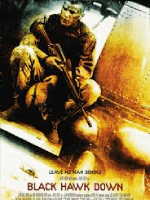Cinema has always been a powerful tool for storytelling, but beyond entertainment, it has often been used as a medium for propaganda in films. Films have the ability to shape public opinion, reinforce nationalistic sentiments, and push political agendas, sometimes without audiences even realizing it. In the modern era, propaganda in films has become more sophisticated, blending seamlessly with mainstream entertainment. Unlike historical propaganda, which was often direct and obvious, today’s propaganda is more nuanced, using compelling narratives and high production values to subtly influence audiences.
 One of the most blatant examples of Hollywood and military collaboration in recent years is Top Gun: Maverick (2022). Like its predecessor from 1986, the film was produced with full cooperation from the U.S. military, granting the filmmakers access to real fighter jets, aircraft carriers, and training facilities. The film presents a highly idealized version of military life, focusing on adventure, heroism, and camaraderie while conveniently avoiding any discussion of the darker aspects of military service. Such films serve as recruitment tools, glorifying the armed forces and reinforcing the idea that military intervention is always justifiable.
One of the most blatant examples of Hollywood and military collaboration in recent years is Top Gun: Maverick (2022). Like its predecessor from 1986, the film was produced with full cooperation from the U.S. military, granting the filmmakers access to real fighter jets, aircraft carriers, and training facilities. The film presents a highly idealized version of military life, focusing on adventure, heroism, and camaraderie while conveniently avoiding any discussion of the darker aspects of military service. Such films serve as recruitment tools, glorifying the armed forces and reinforcing the idea that military intervention is always justifiable.
Propaganda in Films: Glorifying Wars
The glorification of war is another key element of propaganda in films. American Sniper (2014), directed by Clint Eastwood, tells the story of Chris Kyle, a U.S. Navy SEAL sniper in the Iraq War. The film focuses on Kyle’s skills, sacrifices, and struggles, painting him as a hero while largely ignoring the broader political complexities of the war. Iraqi insurgents are mostly presented as faceless enemies, and the film reinforces the idea that American military action is inherently justified. This kind of narrative simplifies complex geopolitical issues, shaping public perception in favor of military aggression.
 Similarly, Zero Dark Thirty (2012) takes a more subtle but equally propagandistic approach. The film dramatizes the CIA’s hunt for Osama bin Laden, and its most controversial aspect is its depiction of torture. The film strongly suggests that torture played a crucial role in gathering intelligence, despite real-world reports debunking this claim. By presenting this as fact, Zero Dark Thirty helps justify extreme counterterrorism measures, reinforcing the idea that such actions are necessary for national security.
Similarly, Zero Dark Thirty (2012) takes a more subtle but equally propagandistic approach. The film dramatizes the CIA’s hunt for Osama bin Laden, and its most controversial aspect is its depiction of torture. The film strongly suggests that torture played a crucial role in gathering intelligence, despite real-world reports debunking this claim. By presenting this as fact, Zero Dark Thirty helps justify extreme counterterrorism measures, reinforcing the idea that such actions are necessary for national security.
 The framing of war narratives in favor of Western military actions extends to films like Black Hawk Down (2001), which tells the story of a U.S. military operation in Somalia. The film presents the American soldiers as noble victims under attack, without diving into the historical context of U.S. involvement in Somalia. By focusing solely on the American perspective, the film reinforces a narrative of heroism while ignoring the larger consequences of military intervention. A similar approach is seen in 13 Hours: The Secret Soldiers of Benghazi (2016), which depicts a U.S. response to an attack in Libya but avoids discussing the political decisions that led to the crisis.
The framing of war narratives in favor of Western military actions extends to films like Black Hawk Down (2001), which tells the story of a U.S. military operation in Somalia. The film presents the American soldiers as noble victims under attack, without diving into the historical context of U.S. involvement in Somalia. By focusing solely on the American perspective, the film reinforces a narrative of heroism while ignoring the larger consequences of military intervention. A similar approach is seen in 13 Hours: The Secret Soldiers of Benghazi (2016), which depicts a U.S. response to an attack in Libya but avoids discussing the political decisions that led to the crisis.
Propaganda in Conflicts: political messaging in cinema
Propaganda in films is not limited to war films; it also plays a role in international political conflicts. The Interview (2014), a comedy starring Seth Rogen and James Franco, may seem like a light-hearted satire, but its premise—a fictional assassination plot against North Korean leader Kim Jong-un—turned it into a politically charged film. The movie was widely condemned by North Korea, leading to international tensions and even cyberattacks against Sony Pictures. Though intended as entertainment, the film played into existing Western narratives about North Korea, reinforcing its image as a rogue state.
 Similarly, Red Dawn (2012), a remake of the Cold War-era film, originally depicted China as the invading force. However, due to concerns over losing the Chinese market, the film’s villains were digitally altered to be North Korean instead. Despite this change, the film serves as classic propaganda, fueling nationalist paranoia by depicting an America under attack, where civilians must rise to defend their homeland.
Similarly, Red Dawn (2012), a remake of the Cold War-era film, originally depicted China as the invading force. However, due to concerns over losing the Chinese market, the film’s villains were digitally altered to be North Korean instead. Despite this change, the film serves as classic propaganda, fueling nationalist paranoia by depicting an America under attack, where civilians must rise to defend their homeland.
The success of modern propaganda films lies in their ability to blend ideology with entertainment. Unlike older propaganda, which often felt forced or overtly political, today’s propaganda films use gripping storytelling, emotional depth, and high-budget spectacle to make their messages more palatable. Films like American Sniper and Top Gun: Maverick succeed not just because of their themes but because they are genuinely entertaining, making audiences emotionally invested in their narratives. This emotional engagement makes the underlying propaganda even more effective.
The Danger
The danger of propaganda in films is that it shapes public perception in ways that align with specific political or military agendas while often silencing opposing viewpoints. These films do more than entertain—they influence how audiences interpret real-world conflicts, justify military interventions, and view foreign nations. In an era where media consumption is at an all-time high, propaganda in film is more effective than ever, embedding itself within compelling narratives that blur the line between fiction and reality.
But cinema is also a tool for truth, for resistance, for questioning power. Just as films can be used to push an agenda, they can also expose propaganda and challenge dominant narratives. The real power lies with the audience—those willing to watch with a critical eye, to separate storytelling from manipulation, and to question the version of reality being presented. Because in the end, the most dangerous propaganda is the one we fail to recognize.
